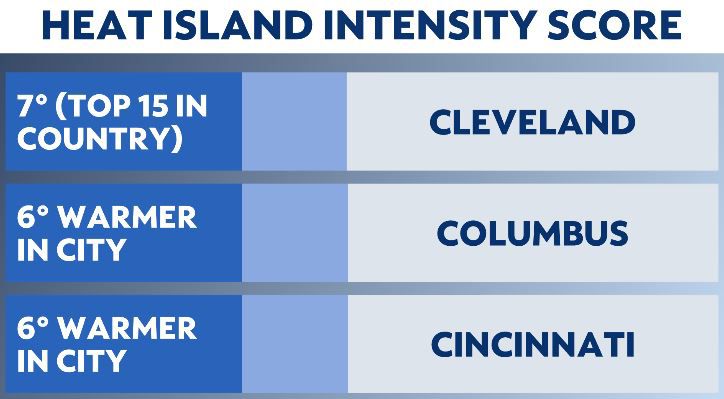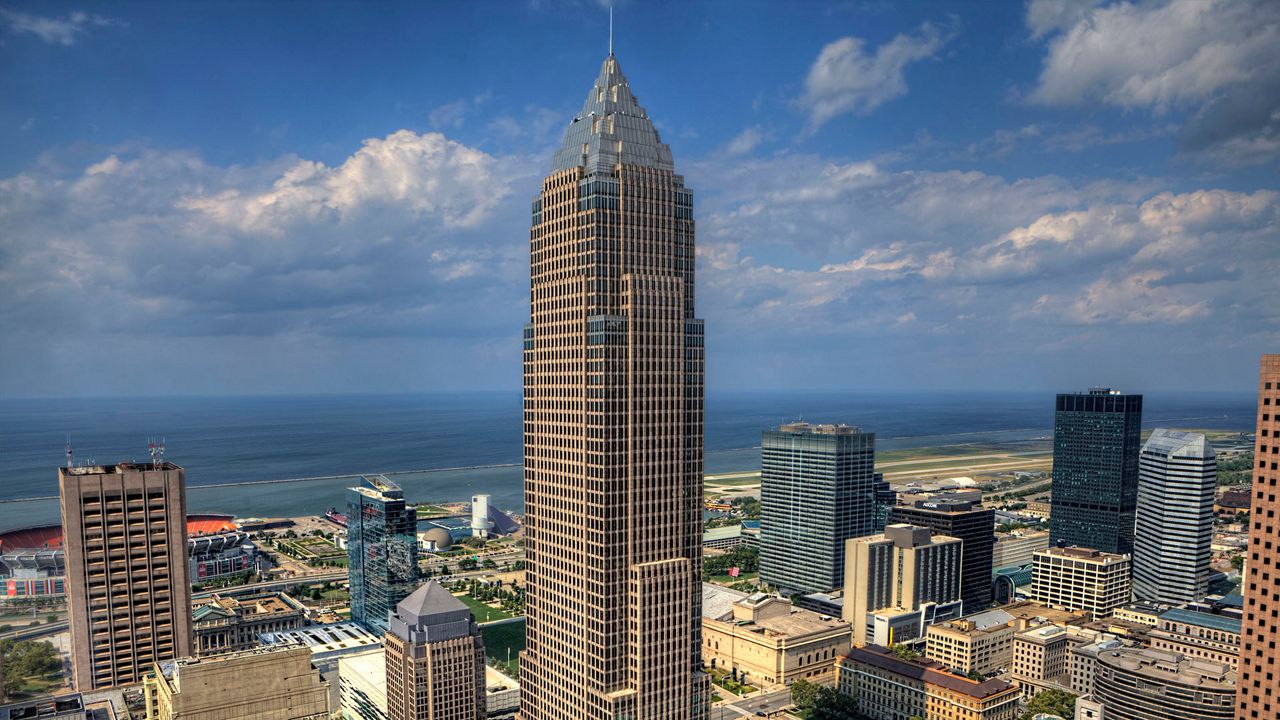Cleveland is used to raking high on lists, but a recent study shows that city is bringing the heat... and not in a good way.
What You Need To Know
- Most of the U.S. population lives near an urban heat island
- A new study puts Cleveland in the top 15 for urban heat islands
- Taller buildings and dark pavement are the main factors
- Heat kills more people than any other weather-related factor
Climate Central released a study that listed the top urban heat islands in the country.
They looked at 158 cities across the country and Cleveland made the top 20, coming in at #15.
The top five cities are New Orleans; Newark, N.J.; New York; Houston and San Francisco.
Urban heat islands are metropolitan areas that are warmer and often more polluted than the surrounding areas.
Cleveland is the only Ohio city in the top 20.
Climate Central gave the cities "intensity" scores.

Cleveland was given an intensity score of seven degrees, while Columbus and Cincinnati were not far behind with an intensity score of six degrees.
This means the temperature is, on average, possibly seven degrees warmer in Cleveland than in outlying areas with more vegetation and less development.
It's important to note some urban heat islands can be 15 to 20 degrees warmer than outlying areas.
Why is Cleveland higher on the list than other major cities in Ohio?
Climate Central cites taller buildings and dark surface streets as major factors for trapping heat.
We talked to the National Weather Service (NWS) in Cleveland about those factors.
"Cleveland, like many other urban centers, has a lot of dark pavement/concrete which typically has lower reflectance (albedo) and absorbs the incoming solar radiation, thus making the temperature higher than surrounding areas," they said.
It also pushes pollution down closer to the surface.
So, what can we do about it?
-3)
The Cleveland NWS says adding more green spaces would help with increasing the reflectance and decreasing the absorption of solar radiation.
Also, white reflects light, so whitewashing roads and sidewalks helps reflect heat back into the atmosphere.
Climate Central also says most people–83% of the U.S. population–live near an urban heat island, but here's why it matters.
Stifling heat can be more than "uncomfortable."
Heat kills more people in the U.S. than any other weather-related factor.



